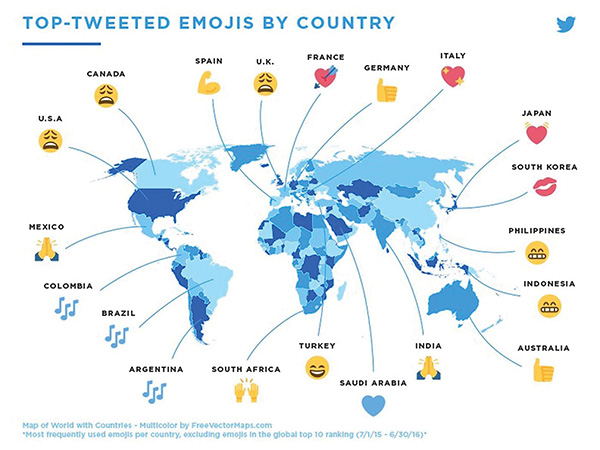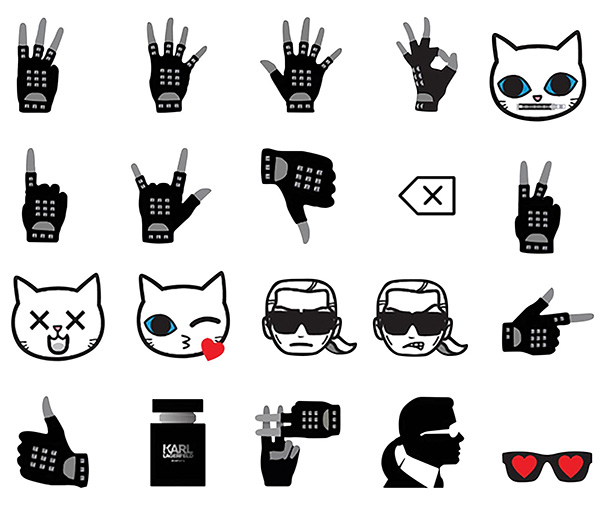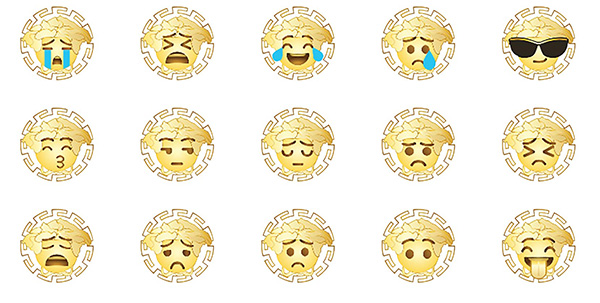
First of all, let's take a quick test to see if you're tuned into this new language skill. Do you have any idea what the following emoji phrases stand for?
















Check your answers:
(1) "Street-style star"
(2) "A-line dress"
(3) "I'm/You're not on the list"
(4) "Hold up, I/you can't"
(5) "No time, don't care, bye"
Unlike most languages you're familiar with, emoji effectively has few rules for grammar, vocabulary, syntax or semantics. The term was born in late-1990s Japan as "picture" (e) + "character" (moji) and featured prominently in electronic messages and on web pages. This quirky Japanese idea became popular on a global scale with the development of social media and the use of the emoji keyboard on Apple's iOS operating system.
The history of humans using symbols to express ourselves dates back some 5,000 years to the Egyptians, who developed hieroglyphics to communicate and document their traditions. Although emoji are very different, according to Vyv Evans, a professor of linguistics at Bangor University in the US, they "have already far eclipsed hieroglyphics, its ancient Egyptian precursor, which took centuries to develop."
One of the major reference points for the modern emoji era was the original version of the iconic yellow smiley face, created in 1963 by American graphic artist Harvey Ross Ball. He never applied for a trademark or copyright, however, so French journalist Franklin Loufrani registered the mark for commercial use when he used it in the newspaper France-Soir in 1972. Today, there are thousands of emoji available in digital communication and it has gone far beyond that humble smiley face.
"Emojis are the first time we've had a universal method of sending emotions as pictures," says Jeremy Burge, founder of reference website Emojipedia, which he launched in 2013 to document all the emoji symbols and meanings in the Unicode Standard system. "The way I see emoji is as a one-off event that will never happen again as long as we use text keyboards for communicating. It’s remarkable that, seemingly overnight, we got an additional keyboard that's installed by default on every phone in the world."











The translation of emoji in different countries can also be a tricky thing. Burge explains that emoji use tends to fall into two categories: literal and figurative. "For instance, people in the US have started using the "WC" emoji to mean "woman crush" instead of its original meaning, "water closet" for the toilet/bathroom," he says.
Nowadays, the influence of emoji is everywhere – and brands and celebrities are all catching the wave. "I see a whole new industry rising out of the emoji phenomenon, with sideline merchandise such as manga, animation, stuffed animals, clothes and shoes," says Lin Zhang, a PhD candidate at the University of Southern California, whose expertise covers the politics, culture and economy of new-media technologies, "Sometimes it's hard to tell which comes first – the featured emoji or the sideline products. But the fact that people use those characters on a daily basis to express themselves definitely improves the 'stickiness' of those icons."

There are celebrity emoji packs by Karl Lagerfeld (emotiKarl), Kim Kardashian (Kimoji), Justin Bieber (Justmoji) and Ellen DeGeneres (Ellen's Emoji Exploji), as well as branded emoji from Versace, Ikea and Harper's Bazaar. There's even Book from the Ground, an entire tome written in emoji by Chinese artist Xu Bing.

Where is emoji headed? "Far from replacing language, the visual symbols in fact enhance our ability to converse with one another – they also facilitate more effective communication," explains Vyv Evans in his article No, the Rise of Emoji Doesn't Spell the End of Language. On the other hand, according to Zhang, the future of mediated communication looks more like a combination of words and icons.
So are you ready to embrace the future of language?
